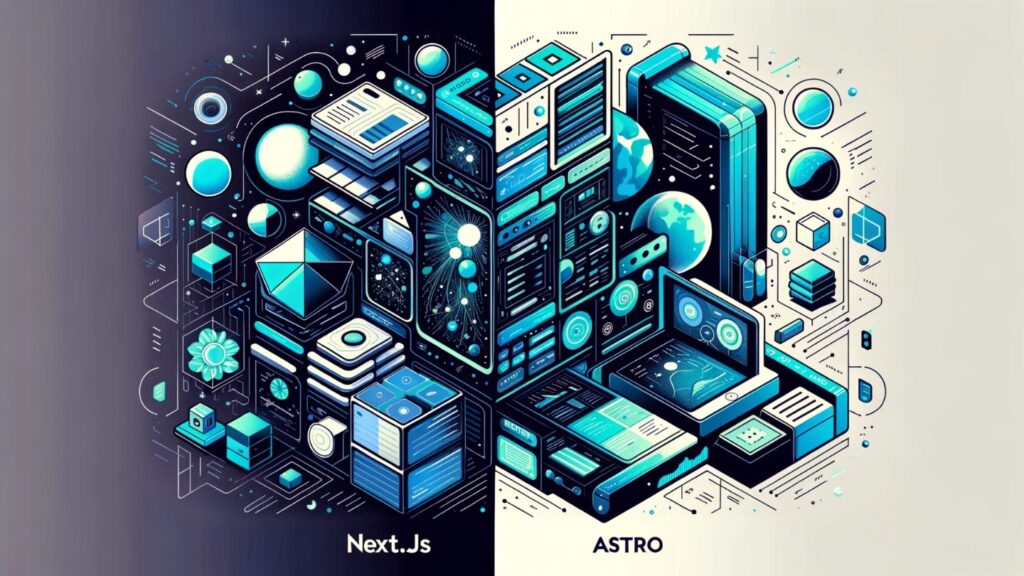In the ever-evolving world of web development, JavaScript continues to reign supreme as the cornerstone language, pivotal in shaping the modern web landscape. The year 2023 has witnessed a kaleidoscope of advancements in JavaScript and Web APIs, each contributing to more robust, efficient, and dynamic web applications. This introduction will guide you through the current state of JavaScript and Web APIs, underscoring their significance in today’s web development ecosystem.
The Unwavering Dominance of JavaScript
JavaScript’s dominance is not a new phenomenon, but its continuous evolution keeps it at the forefront of web development. In 2023, JavaScript’s adaptability and versatility are more pronounced than ever, underpinned by its central role in both client-side and server-side programming. The language’s capacity to integrate with various frameworks and libraries, coupled with its ease of use and community support, renders it indispensable for modern web developers.
Key Points:
- Versatility: JavaScript’s utility extends beyond traditional web pages to complex web applications, mobile apps, and even server-side development.
- Community and Ecosystem: A vibrant community and an extensive ecosystem of tools and libraries, such as React, Vue.js, and Angular, drive continuous innovation and support.
- Continuous Improvement: Regular updates and the introduction of new features ensure that JavaScript stays relevant and efficient.
Web APIs: The Building Blocks of Interactive Web Experiences
Web APIs have become the backbone of creating interactive and dynamic web experiences. They allow web applications to communicate with servers and process data efficiently, fostering a more seamless user experience. In 2023, the evolution of Web APIs has been marked by increased sophistication, embracing modern architectural styles and technologies.
Key Points:
- API-First Design: The approach of designing APIs before the development of the actual application has gained traction, ensuring better collaboration and application scalability (AppMaster).
- Advancement in API Technologies: Technologies such as GraphQL and AsyncAPI are revolutionizing how APIs are constructed and utilized, offering more flexibility and efficiency compared to traditional REST APIs (Gravitee.io).
- Integration with AI and ML: The integration of Artificial Intelligence and Machine Learning in APIs is opening new frontiers in web development, offering advanced functionalities like natural language processing and data analysis with ease of implementation (Reloadly).
The Significance of JavaScript and Web APIs in 2023
The combination of JavaScript and Web APIs in 2023 is not just a technical necessity but a strategic imperative for building modern web applications. They enable developers to create highly responsive, efficient, and interactive web applications. From e-commerce platforms to social media sites, the duo plays a pivotal role in the digital ecosystem, influencing how users interact with the web and how businesses deliver services online.
Next.js and Astro: Leading Frameworks in Web Development
As we explore the landscape of JavaScript in 2023, two frameworks stand out for their significant impact and growing popularity: Next.js and Astro. These frameworks have been instrumental in shaping modern web development practices, offering unique features and capabilities that enhance both developer experience and application performance.
Next.js: The Robust Framework for Reactive Web Applications
Next.js, a React-based framework, continues to be a top choice for developers looking to create server-rendered React applications. Its popularity stems from its ability to provide a balance between server-side rendering and client-side functionality, offering a holistic approach to building scalable and efficient web applications.
Key Features of Next.js:
- Server-Side Rendering (SSR): Next.js excels in SSR, enabling web pages to be rendered on the server, which can significantly improve the initial load time and SEO performance.
- Static Site Generation (SSG): It also supports SSG, allowing developers to pre-render pages at build time, enhancing the performance and scalability of the application.
- API Routes: Next.js provides a straightforward way to build API endpoints within the same project, simplifying the architecture and reducing development overhead.
Example Code Snippet for an API Route in Next.js:
// pages/api/hello.js
export default function handler(req, res) {
res.status(200).json({ message: 'Hello World' });
}
This snippet demonstrates a basic API route in Next.js, where a request to /api/hello would return a JSON response with the message “Hello World.”
Astro: The Rising Star in Modern Web Development
Astro, a newer entrant in the realm of JavaScript frameworks, has rapidly gained attention for its innovative approach to building web applications. Its design philosophy centers around delivering high performance and efficient resource usage.
Key Features of Astro:
- Partial Hydration: Astro introduces the concept of partial hydration, where only the essential JavaScript required for interactivity is loaded, reducing the amount of JavaScript sent to the browser.
- Multi-Framework Compatibility: It allows developers to use components from different frameworks (like React, Vue, and Svelte) within the same project, offering unparalleled flexibility.
Example of a Simple Astro Component:
---
// src/components/HelloWorld.astro
---
<div>
<h1>Hello, Astro!</h1>
</div>
This example showcases a basic Astro component rendering a simple “Hello, Astro!” message. The --- delimiters indicate the boundary between the script and the template sections in an Astro component.
Comparing Next.js and Astro

While Next.js and Astro serve similar purposes in web development, they approach it differently. Next.js is ideal for complex applications that require robust server-side capabilities, whereas Astro is better suited for projects where performance and minimal JavaScript footprint are key considerations.
Emerging JavaScript Features: ES2023 Updates
The evolution of JavaScript is a continuous process, with the ECMAScript (ES) standards bringing new and improved features regularly. In ES2023, several enhancements have been introduced, making JavaScript more powerful and developer-friendly.
toSpliced(), toSorted(), and toReversed(): Immutable Array Operations
ES2023 introduces methods like toSpliced(), toSorted(), and toReversed() for arrays. These methods are designed to offer immutable operations, meaning they return a new array without altering the original one. This approach aligns with functional programming principles, emphasizing immutability for better predictability and fewer side effects in code.
Example demonstrating toSorted():
const numbers = [3, 4, 1, 5, 2];
const sortedNumbers = numbers.toSorted();
console.log(sortedNumbers); // Output: [1, 2, 3, 4, 5]
This code snippet shows how toSorted() is used to sort an array in ascending order, returning a new sorted array while leaving the original numbers array unchanged.
findLast() and findLastIndex(): Enhanced Array Searching
Another notable addition in ES2023 is the introduction of findLast() and findLastIndex() methods for arrays. These methods are particularly useful for scenarios where you need to locate the last occurrence of an element in an array that meets a certain condition.
Example using findLastIndex():
const numbers = [1, 3, 7, 3, 4];
const lastIndex = numbers.findLastIndex(n => n === 3);
console.log(lastIndex); // Output: 3
Here, findLastIndex() is used to find the last index where the number 3 appears in the array, which in this case is at index 3.
Enhancing JavaScript’s Capabilities
The introduction of these features in ES2023 highlights JavaScript’s ongoing evolution. By providing more built-in methods and enhancing the language’s capabilities, JavaScript continues to streamline development processes and improve code readability and maintainability. These advancements not only ease the developer’s workload but also open up new possibilities for efficient and effective coding practices.
Jamstack and the Composable Web
Jamstack represents a modern architectural approach that stands for JavaScript, APIs, and Markup. It has become increasingly popular in 2023 for building fast and efficient web applications. By leveraging the power of pre-rendering and static site generation along with dynamic JavaScript functionalities, Jamstack offers a compelling way to build websites and web apps.
Core Principles of Jamstack
- Pre-rendering and Static Site Generation: Jamstack emphasizes generating static HTML pages during build time. This approach ensures faster page loads, better SEO, and improved security.
- Client-Side JavaScript: It uses client-side JavaScript to handle dynamic functionalities and enrich the user experience.
- Decoupled Architecture: The use of APIs in Jamstack enables a decoupled architecture, separating the frontend from the backend, which allows for greater flexibility and scalability.
Implementing a Basic Jamstack Application
A basic Jamstack application can be created using static site generators like Gatsby or Next.js. Here’s a simple example using Next.js, showcasing the integration of JavaScript and APIs:
// pages/index.js in a Next.js application
import React from 'react';
const HomePage = ({ posts }) => (
<div>
<h1>My Blog</h1>
<ul>
{posts.map(post => (
<li key={post.id}>{post.title}</li>
))}
</ul>
</div>
);
export async function getStaticProps() {
const res = await fetch('https://jsonplaceholder.typicode.com/posts');
const posts = await res.json();
return {
props: {
posts,
},
};
}
export default HomePage;
n this example, getStaticProps is a Next.js function that fetches data at build time. It fetches blog posts from a sample API and passes them as props to the HomePage component. This pattern is typical in Jamstack applications, where static generation is combined with dynamic API calls.
Benefits of Jamstack
- Performance: Static files are fast to serve and can be distributed easily through CDNs.
- Security: Reduced server-side dependencies lower the risk of vulnerabilities.
- Scalability: Handling traffic spikes is more manageable as the core content is pre-generated and served statically.
Advancements in API Technologies
2023 has seen significant advancements in API (Application Programming Interface) technologies, pushing the boundaries of web development further. Modern API practices and architectural styles have not only made web applications more dynamic and scalable but also more interconnected and responsive.
API-First Design

The API-first design approach has become increasingly prominent. This methodology prioritizes the design of APIs at the beginning of the project, ensuring a more structured development process and improved collaboration between frontend and backend teams.
Example of API-First Design with JavaScript:
Consider a scenario where a web application requires a user registration feature. In an API-first approach, the API endpoint for user registration is designed first.
// Example of a simple Express.js server with a user registration endpoint
const express = require('express');
const app = express();
app.use(express.json());
app.post('/register', (req, res) => {
const { username, email, password } = req.body;
// Logic to handle user registration
res.status(201).send('User registered successfully');
});
const PORT = process.env.PORT || 3000;
app.listen(PORT, () => console.log(`Server running on port ${PORT}`));
In this code, an Express.js server is set up with a /register endpoint for user registration, showcasing the API-first approach.
Integration of AI and ML in APIs
The incorporation of Artificial Intelligence (AI) and Machine Learning (ML) into APIs is a trend that has notably enhanced the capabilities of web applications. These technologies allow for more intelligent data processing and user interaction.
Example of Using an AI/ML API in JavaScript:
// Example using an AI text analysis API
const fetch = require('node-fetch');
async function analyzeText(text) {
const response = await fetch('https://api.ai-provider.com/analyze', {
method: 'POST',
headers: {
'Content-Type': 'application/json',
'API-Key': 'your-api-key'
},
body: JSON.stringify({ text })
});
const data = await response.json();
return data;
}
analyzeText('Your sample text here').then(data => console.log(data));
This example demonstrates how to make a request to an AI text analysis API, sending text data and receiving insights or analysis in return.
Embracing Modern API Technologies
The advancements in API technologies, such as the adoption of AI and ML, API-first design, and the emergence of new API architectures like GraphQL and AsyncAPI, are pivotal in modern web development. They offer improved performance, better user experiences, and more flexible and scalable application architectures.
The Role of AI and Machine Learning in Web Development
The integration of Artificial Intelligence (AI) and Machine Learning (ML) in web development has been one of the most transformative trends in 2023. These technologies are being leveraged to enhance user experiences, automate tasks, and process vast amounts of data efficiently.
AI-Driven User Interaction
AI has enabled the creation of more intuitive and interactive user experiences on websites. Chatbots powered by AI are a prime example, providing instant customer support and user interaction.
Example of Integrating an AI Chatbot in JavaScript:
// Example integrating a basic AI chatbot using an external API
const fetch = require('node-fetch');
async function getChatbotResponse(message) {
const response = await fetch('https://api.chatbot.com/query', {
method: 'POST',
headers: {
'Content-Type': 'application/json',
'API-Key': 'your-chatbot-api-key'
},
body: JSON.stringify({ query: message })
});
const data = await response.json();
return data.reply;
}
getChatbotResponse('Hello, how can I help you?').then(reply => console.log(reply));
In this snippet, a function is set up to send a user’s message to a chatbot API and return the chatbot’s response, demonstrating a simple integration of AI in user interactions.
Machine Learning for Data Analysis and Predictions
Machine learning algorithms can process and analyze large datasets to make predictions or recommendations, a feature increasingly used in e-commerce and content platforms.
Example of Using ML for Recommendations:
Imagine a scenario where a web application recommends products based on user preferences. While the detailed ML model would be complex, here’s a simplified JavaScript example calling a hypothetical ML-powered recommendation API:
async function getProductRecommendations(userId) {
const response = await fetch(`https://api.recommendation.com/users/${userId}/recommendations`);
const recommendedProducts = await response.json();
return recommendedProducts;
}
getProductRecommendations('user123').then(products => console.log(products));
This code illustrates how a web application might interact with an ML-based recommendation system, fetching personalized product recommendations for a user.
Impact of AI and ML in Web Development

The integration of AI and ML in web development has not only automated mundane tasks but also brought about sophisticated capabilities like predictive analytics, natural language processing, and personalized user experiences. These technologies are shaping a new era of web applications that are smarter, more responsive, and highly personalized.
Security and Performance Optimization in JavaScript Applications
As JavaScript applications grow in complexity and scale, prioritizing security and performance optimization becomes crucial. In 2023, developers have an array of strategies and tools at their disposal to ensure their applications are not only fast and responsive but also secure from potential threats.
Implementing Secure Coding Practices
Security in JavaScript applications involves safeguarding against common vulnerabilities like XSS (Cross-Site Scripting) and CSRF (Cross-Site Request Forgery). This requires a mindful approach to coding and the use of security-focused libraries.
Example: Sanitizing User Input to Prevent XSS Attacks
One key security practice is to sanitize user input to prevent XSS attacks. Here’s a basic example of sanitizing user input in a Node.js application using the xss library:
const xss = require('xss');
function sanitizeInput(input) {
return xss(input);
}
// Example usage
const userInput = '<script>alert("malicious code")</script>';
console.log('Sanitized input:', sanitizeInput(userInput));
In this snippet, any potentially harmful scripts embedded in the user input are neutralized, preventing them from being executed in the application.
Performance Optimization Techniques
Performance optimization in JavaScript applications involves strategies like lazy loading, code splitting, and efficient resource management to enhance the user experience, especially in terms of load times and responsiveness.
Example: Implementing Lazy Loading in React
In React applications, lazy loading can be implemented to load components only when they are needed, thereby reducing the initial load time.
import React, { Suspense, lazy } from 'react';
const LazyComponent = lazy(() => import('./LazyComponent'));
function App() {
return (
<div>
<Suspense fallback={<div>Loading...</div>}>
<LazyComponent />
</Suspense>
</div>
);
}
export default App;
This code demonstrates how to use React’s lazy and Suspense to load a component lazily. LazyComponent is only loaded when it needs to be rendered, improving the application’s performance.
Importance of Security and Performance
Balancing security and performance is essential in modern web development. While security measures protect against threats and data breaches, performance optimizations ensure a smooth and fast user experience. Adhering to best practices in both areas is key to building robust and reliable JavaScript applications.
The Rise of TypeScript in JavaScript Development
TypeScript, a statically typed superset of JavaScript, has seen a significant rise in popularity and adoption in 2023. It offers advantages such as type checking, improved code readability, and better support for large-scale applications. TypeScript’s features make it an attractive choice for developers seeking to enhance code quality and maintainability in their JavaScript projects.
Enhanced Type Safety with TypeScript
TypeScript introduces type safety to JavaScript, helping developers catch errors early in the development process. This is particularly beneficial in large projects where tracking down type-related bugs can be challenging.
Example: Defining Types in TypeScript
Here’s a simple TypeScript example where types are explicitly defined for function parameters:
function addNumbers(a: number, b: number): number {
return a + b;
}
const sum = addNumbers(5, 10);
console.log('Sum:', sum); // Output: Sum: 15
In this TypeScript code, the parameters a and b are explicitly typed as numbers, and the function is expected to return a number. This ensures that only numerical values are passed to and returned from the addNumbers function.
Improved Code Maintainability
TypeScript’s static typing system not only enhances code quality but also improves maintainability. It makes the code more understandable and easier to refactor, which is crucial for long-term project sustainability.
Example: TypeScript Interfaces for Object Structures
TypeScript interfaces can be used to define the structure of objects, making the code more organized and maintainable.
interface User {
name: string;
age: number;
isActive: boolean;
}
function createUser(user: User) {
// User creation logic
console.log('Creating user:', user.name);
}
createUser({ name: 'Alice', age: 30, isActive: true });
Here, an interface User is defined to structure user data. The createUser function then uses this interface, ensuring that the passed object adheres to the defined structure.
TypeScript and Modern JavaScript Frameworks
Many modern JavaScript frameworks and libraries, such as React, Angular, and Vue, offer extensive TypeScript support. This integration further boosts TypeScript’s popularity, providing a seamless development experience for those preferring type-safe environments.
Conclusion: The Evolving Landscape of JavaScript and Web APIs
As we look back at the advancements in JavaScript and Web APIs in 2023, it’s clear that these technologies continue to be pivotal in the ever-evolving landscape of web development. The introduction of new ECMAScript features, the growing popularity of frameworks like Next.js and Astro, and the integration of AI and Machine Learning in web applications have collectively pushed the boundaries of what’s possible on the web. These developments not only enhance the capabilities of web applications but also open up new avenues for innovation, offering developers more tools and methodologies to create sophisticated, efficient, and secure web solutions.
The future of web development, with JavaScript and Web APIs at its core, looks promising and exciting. The rise of TypeScript indicates a shift towards more robust and maintainable codebases, while the emphasis on security and performance optimization ensures that web applications continue to be reliable and user-friendly. As these technologies evolve, they will undoubtedly continue to shape the way we interact with and experience the digital world, driving forward the standards of modern web development and setting new benchmarks for what can be achieved through the power of coding and creativity.




